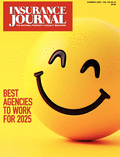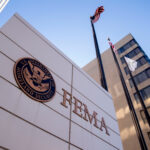AM Best said it held the belief that the U.S. personal auto line would right the ship following weakening performance in 2021, but headwinds such as inflation remain too strong and the rating agency revised its outlook for the segment from stable to negative.
Recent financial results in personal auto also led AM Best to revise its outlook for U.S. personal lines to negative.
On auto, AM Best said near-term underwriting profitability “appears highly unlikely” because the increase in loss severity has outrun carriers’ collective efforts to achieve rate adequacy. Severity has been affected by increases in repair costs and used car prices, supply chain and labor challenges, rising medical costs, and a higher rate of fatalities.
The private passenger auto liability loss ratio through the first half of 2022 deteriorated over 11 percentage points to 71.5, from 60.1 in the same prior-year period. The auto physical damage loss ratio spiked up about 16 percentage points, according to AM Best’s market segment report.
“Many carriers continue to pursue rate adequacy in response to post-pandemic lockdown frequency and severity levels, but their ability to stay ahead of current trends has been a challenge,” said Richard Attanasio, senior director, AM Best. “The timeliness and effectiveness of sought-after rate increases has been varied based on regulatory jurisdictions.”
In the past, the regulatory response to insurers’ need for modest rate increases was not a problem. However, the need for more and higher rate increases has grown alongside broader economic trends. AM Best said insurance companies that do not have the mean, expertise, or technology to keep pace with the current challenging environment “will be those likely to face ratings pressure.”
The pressures on personal auto were a major factor in the rating agency’s negative outlook on personal lines but there are other reasons, such as the rising trend in reinsurance costs. Reinsurers are reevaluating portfolios and tolerance levels due to higher frequency and severity of losses from U.S. storm activity caused especially by upticks in materials and labor.
“Rising reinsurance costs can pressure operating performance and balance sheet strength if lower levels of reinsurance protection result in higher net probable maximum losses or net retained losses that are significant enough to erode surplus,” said Attanasio. Passing these costs on the consumers may be met with regulatory resistance in certain states, he added.
Primary insurers have attempted to deal with this trend by increasing their retention levels and purchasing protection higher in the insurance tower; however, in the meantime, losses from secondary perils such as tornadoes, wildfires, winter storms, and straight-line winds often fall within insurers’ net retentions. AM Best said the frequency and severity of these perils have increased and the “ability to absorb multiple events both financially and operationally is increasingly important.”
Added to these challenges for personal insurers is slow overall economic growth, leading to uncertainty and depressed consumer and business sentiment.
The rating agency said the best insurers have invested in technology to improve underwriting and pricing tools. “Advances in predictive modeling and pricing analytics, as well as the use of third-party data, have provided carriers more opportunities to pursue profitable growth or manage profitability pressures,” AM Best noted.
Was this article valuable?
Here are more articles you may enjoy.



 IBHS Study Shows Smaller Hail May Be More Damaging to Roofs Than Once Believed
IBHS Study Shows Smaller Hail May Be More Damaging to Roofs Than Once Believed  FEMA, Customs and Border Protection Staff Data Stolen in Breach
FEMA, Customs and Border Protection Staff Data Stolen in Breach  Charlie Javice Duped JPMorgan Out of $175 Million. The Bank Is Picking Up Her Legal Tab
Charlie Javice Duped JPMorgan Out of $175 Million. The Bank Is Picking Up Her Legal Tab  Florida’s Citizens Is Deferring Flood Coverage Proof While NFIP Is Shut Down
Florida’s Citizens Is Deferring Flood Coverage Proof While NFIP Is Shut Down 


